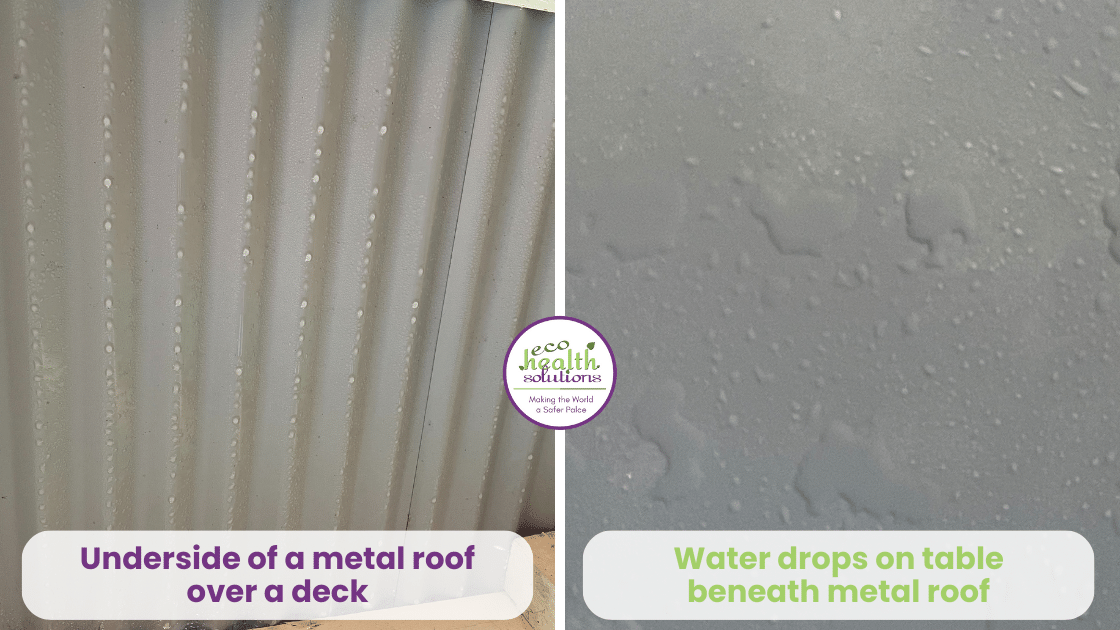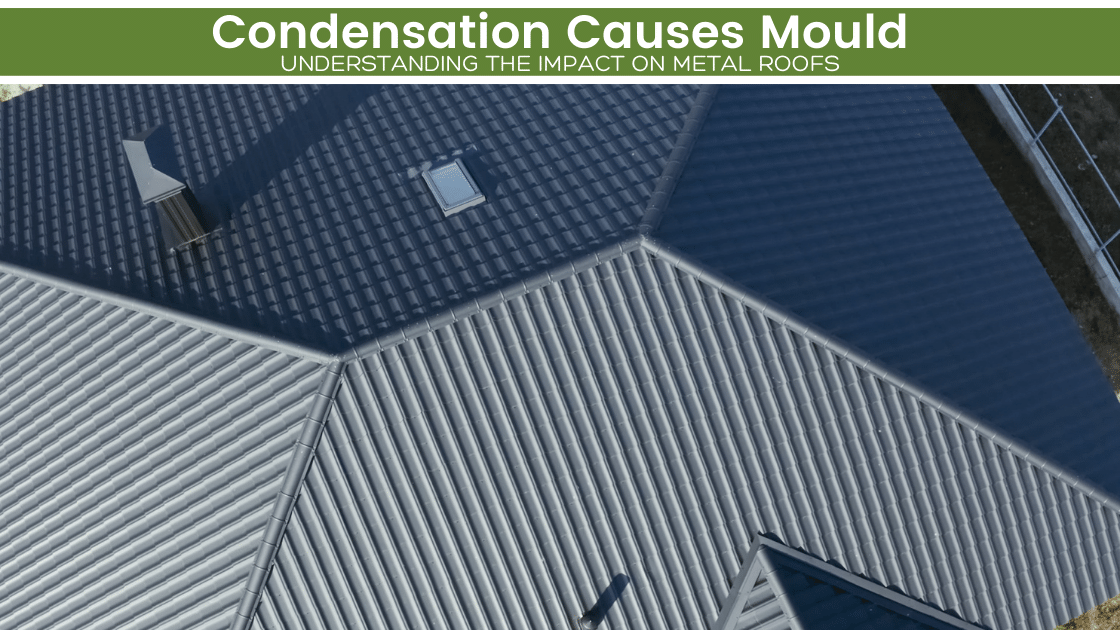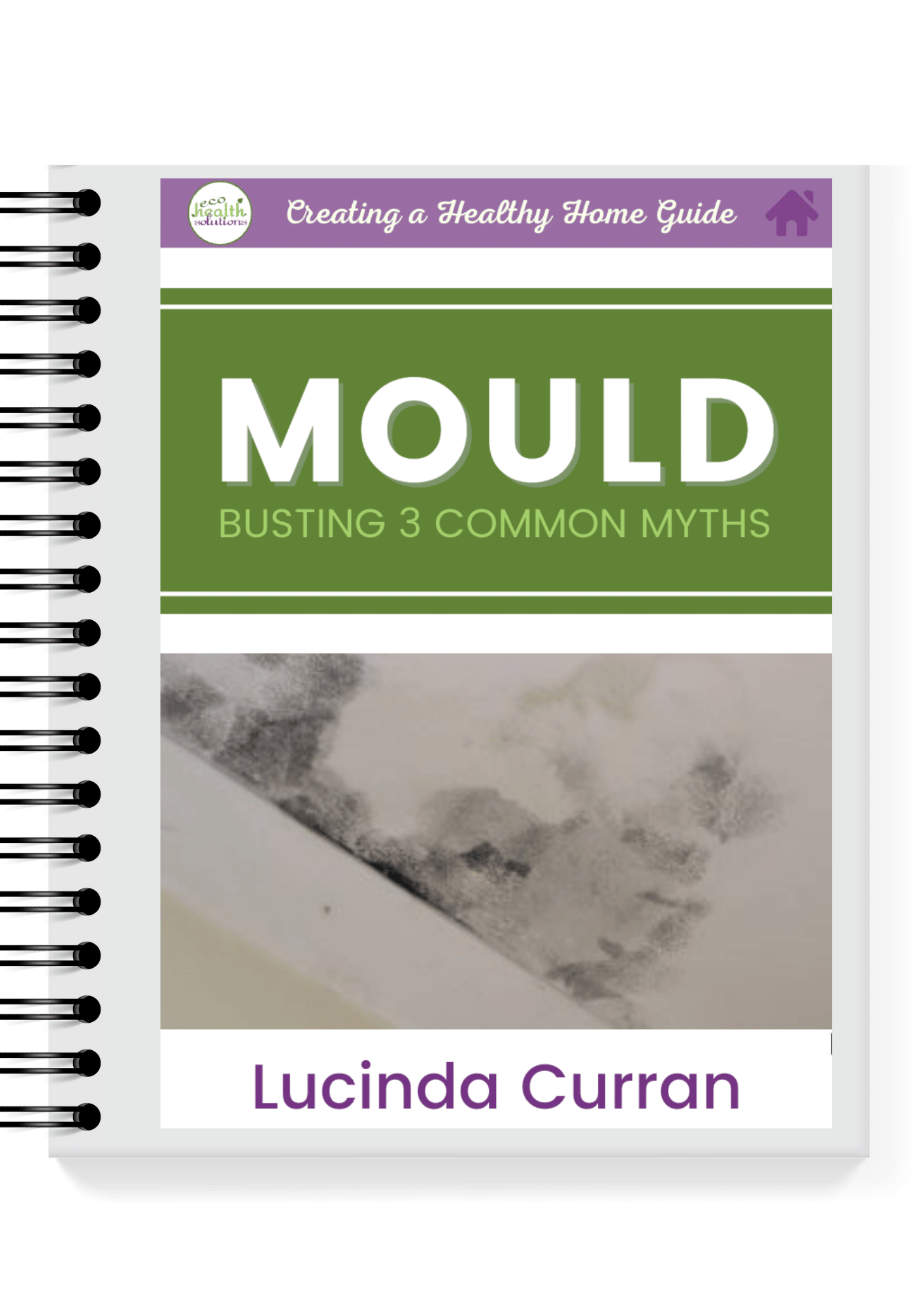Condensation Causes Mould
In this post, we’ll be exploring how condensation causes mould.
Condensation is a common phenomenon that occurs when moist air comes into contact with a cold surface, leading to the formation of water droplets.
While condensation can affect various surfaces, metal roofs, particularly those with a low angle, present unique challenges. In this blog post, we will explore the impact of condensation on metal roofs, focusing on its potential to cause mould growth and its implications for health.
By understanding this relationship, homeowners and builders can take proactive measures to mitigate the risks associated with condensation.
The Nature of Metal Roofs
Metal roofs have gained popularity due to their durability, longevity, and aesthetic appeal – they’re also relatively low cost, and are quicker and easier to install than more traditional roofing materials, such as tiles.
However, they also possess certain characteristics that make them susceptible to condensation-related issues – namely that metal is a good thermal conductor – meaning it can cool and heat up relatively quickly. What happens then, is that metal roofs are often close to the outdoor temperature and thus can be very different to the temperature within a roof space or attic.
Metal roofs are typically installed with an angle of less than 22 degrees, which poses challenges when it comes to managing water runoff (Australian Building Codes Board, 2021), we’ll come back to this.
Condensation Drips and the Risk of Mould Growth
In traditional roofing systems with steeper angles, rainwater efficiently runs off the surface, minimising the chances of water accumulation and subsequent condensation-related problems.
However, when the angle of a metal roof is less than 22 degrees, condensation cannot run off it, which results in it dripping.
As I always say, mould is a moisture issue.
Mould spores are everywhere and are waiting for the right level of moisture to become active. Metal roofs with condensation issues can provide an ideal environment for mould.
The growth of mould on a roof’s underside not only compromises its structural integrity but also poses serious health risks to occupants (National Construction Code, 2021).
I want to illustrate this for you with some photos I took of the underside of a metal roof that covered a deck.

These photos were taken mid morning after a cold night. You can see the condensation lined up along the valleys of the metal roof (left). As well, you can see the moisture on the table beneath (right).
Health Implications of Mould Growth
Mould growth can have significant implications for human health. Exposure to mould spores, particularly indoors, can cause a range of health problems, including allergies, respiratory issues, and even infections. Individuals with existing respiratory conditions, such as asthma, are particularly vulnerable to the adverse effects of mould exposure (Wang et al, 2023; ABCB, 2019).
There is a growing body of research that highlights the detrimental effects of mould on respiratory health, emphasising the importance of preventing mould growth in buildings to safeguard occupants’ wellbeing.
Mould, including the strains commonly found in damp and poorly ventilated areas, thrives in the presence of moisture. Metal roofs are condensation risks, and without enough slope, this can drip onto insulation or the plasterboards of the ceiling, and result in “hidden mould”, and thus can be playing a role in health issues, even when there is no visible mould.
Understanding the Causes of Condensation
To effectively address condensation-related issues on metal roofs, it is crucial to understand the underlying causes.
While the slope of the roof is an incredibly important factor, there are other important considerations. These are high humidity levels within the building, inadequate ventilation, and temperature differentials between the interior and exterior environments. Identifying these causes allows homeowners and builders to implement appropriate measures to control condensation and mitigate its impact (ABCB, 2019).
Mitigating Condensation Issues on Metal Roofs
To combat condensation problems and prevent mould growth on metal roofs, several strategies can be employed:
Improving Ventilation
Adequate ventilation is essential to expel excess moisture and maintain a balanced humidity level. Proper airflow helps in reducing the likelihood of condensation formation (Australian Building Codes Board, 2021; New Zealand Building Performance, n.d.). Some simple steps include venting extractor fans to the exterior of the building (not into the roof space), installing whirlybirds, depending on the climate, opening the roof space up to allow air circulation (e.g. having metal mesh soffits).
Insulating the Roof
Insulation acts as a thermal barrier, minimising temperature differentials between the interior and exterior surfaces of the roof. This helps reduce the occurrence of condensation by preventing warm, moist air from coming into contact with the cold metal surface (Australian Building Codes Board, 2021; New Zealand Building Performance, n.d.). Care also needs to be taken to ensure that the insulation does not block the condensation runoff, and also that it isn’t directly beneath the metal roof.
Installing Vapour Barriers
Vapour barriers are effective in preventing moisture from permeating into the roof structure. By creating a barrier, they minimise the chances of condensation formation (Australian Building Codes Board, 2021; New Zealand Building Performance, n.d.). What they do is allow water vapour to escape from within the building envelope.
Compliance with Building Codes and Standards
To ensure the safety and quality of construction, it is crucial to adhere to relevant building codes and standards. In the case of metal roofs and condensation management, the Australian Building Codes Board and National Construction Code provide guidelines and regulations to mitigate the risks associated with condensation and mould growth (Australian Building Codes Board, 2021; National Construction Code, 2021).
In New Zealand, where “leaky buildings” have been a significant issue, the New Zealand Building Performance provides valuable resources and information on weathertightness and managing condensation to address these concerns (New Zealand Building Performance, n.d.).
While Condensation Causes Mould it Can Be Mitigated
Condensation on metal roofs, especially those with angles less than 22 degrees, can lead to the formation of condensation drips, increasing the risk of mould growth. This can have detrimental effects on both the structural integrity of the roof and the health of the occupants. Mould exposure can result in allergies, respiratory issues, and infections, particularly for individuals with pre-existing respiratory conditions.
Understanding the causes of condensation, such as high humidity levels and inadequate ventilation, is crucial in developing effective strategies for mitigating condensation-related problems. Improving ventilation, insulating the roof, and installing vapour barriers are practical measures to control condensation and prevent mould growth.
Compliance with building codes and standards ensures that construction practices align with recommended guidelines for condensation management. By implementing these strategies and following regulatory requirements, homeowners and builders can create healthier living environments and prolong the lifespan of metal roofs.
Taking proactive steps to address condensation issues on metal roofs is essential for safeguarding the integrity of the structure and the well-being of those who reside within. By prioritising proper ventilation, insulation, and moisture control, homeowners and builders can minimise the risks associated with condensation and create a safer, mould-free living environment.
References:
Australian Building Codes Board (ABCB). (2019). Condensation in Buildings. Building Science Series. Retrieved from https://www.abcb.gov.au/sites/default/files/resources/2022/Handbook-condensation-in-buildings-2019.pdf
Australian Building Codes Board (ABCB). (2021). National Construction Code – Volume One. Retrieved from https://ncc.abcb.gov.au/editions/ncc-2022/adopted/volume-one/preface/introduction-national-construction-code-ncc
BRANZ. (2021). Build Magazine: Moisture Management.
National Construction Code. (2021). Building Code of Australia. Retrieved from https://ncc.abcb.gov.au/editions-national-construction-code
New Zealand Building Performance. (n.d.). Weathertightness. Retrieved from https://www.building.govt.nz/building-code-compliance/e-moisture/e2-external-moisture/an-introduction-to-weathertightness-design-principles/
Ministry of Business, Innovation and Employment. (2021). Building Code Compliance Document H1 Energy Efficiency. Retrieved from https://www.building.govt.nz/building-code-compliance/h-energy-efficiency/h1-energy-efficiency/
Wang, J. et al (2023). Effects of mold, water damage and window pane condensation on adult rhinitis and asthma partly mediated by different odors. Building and Environment, 2023. Retrieved from https://doi.org/10.1016/j.buildenv.2022.109814














0 Comments